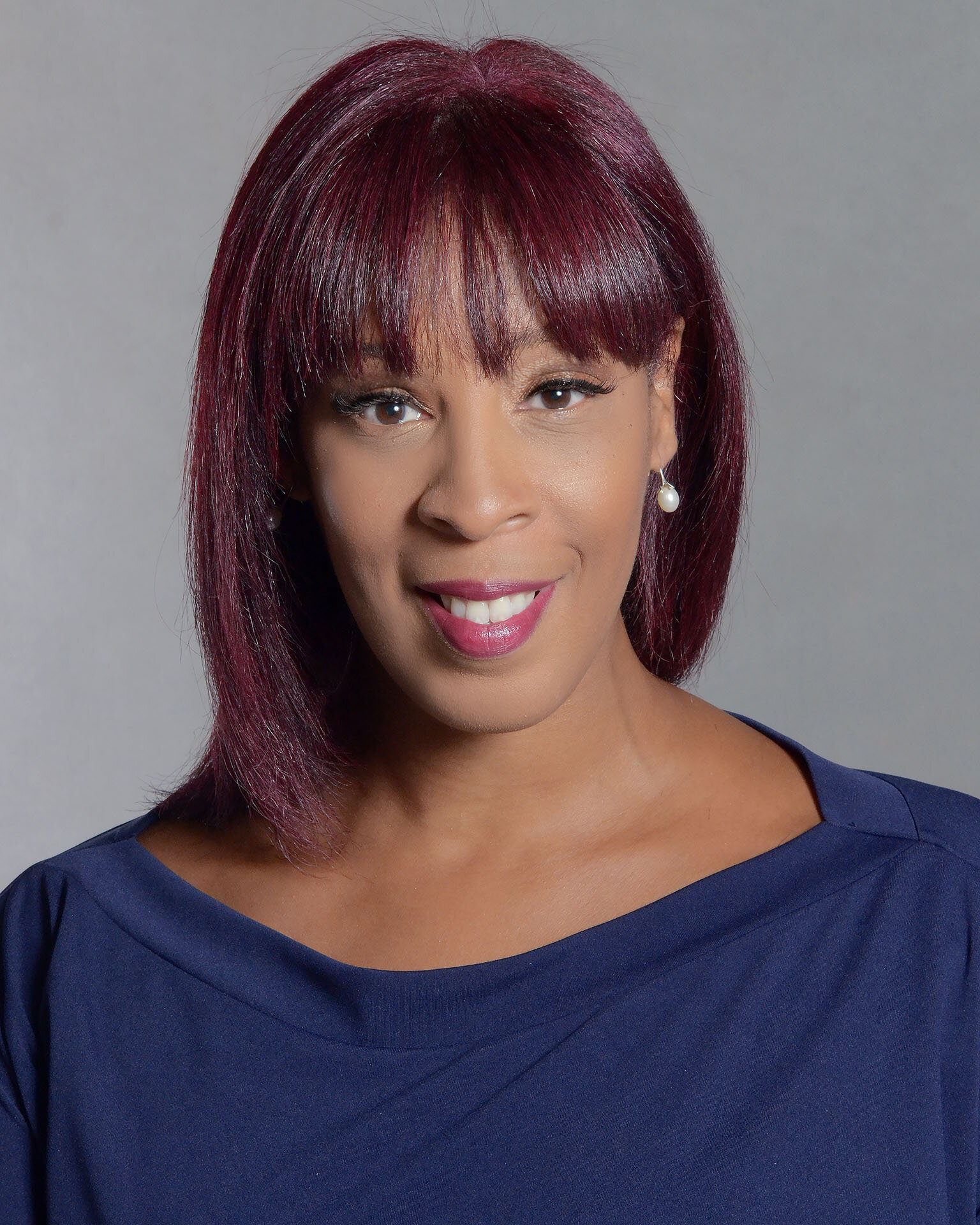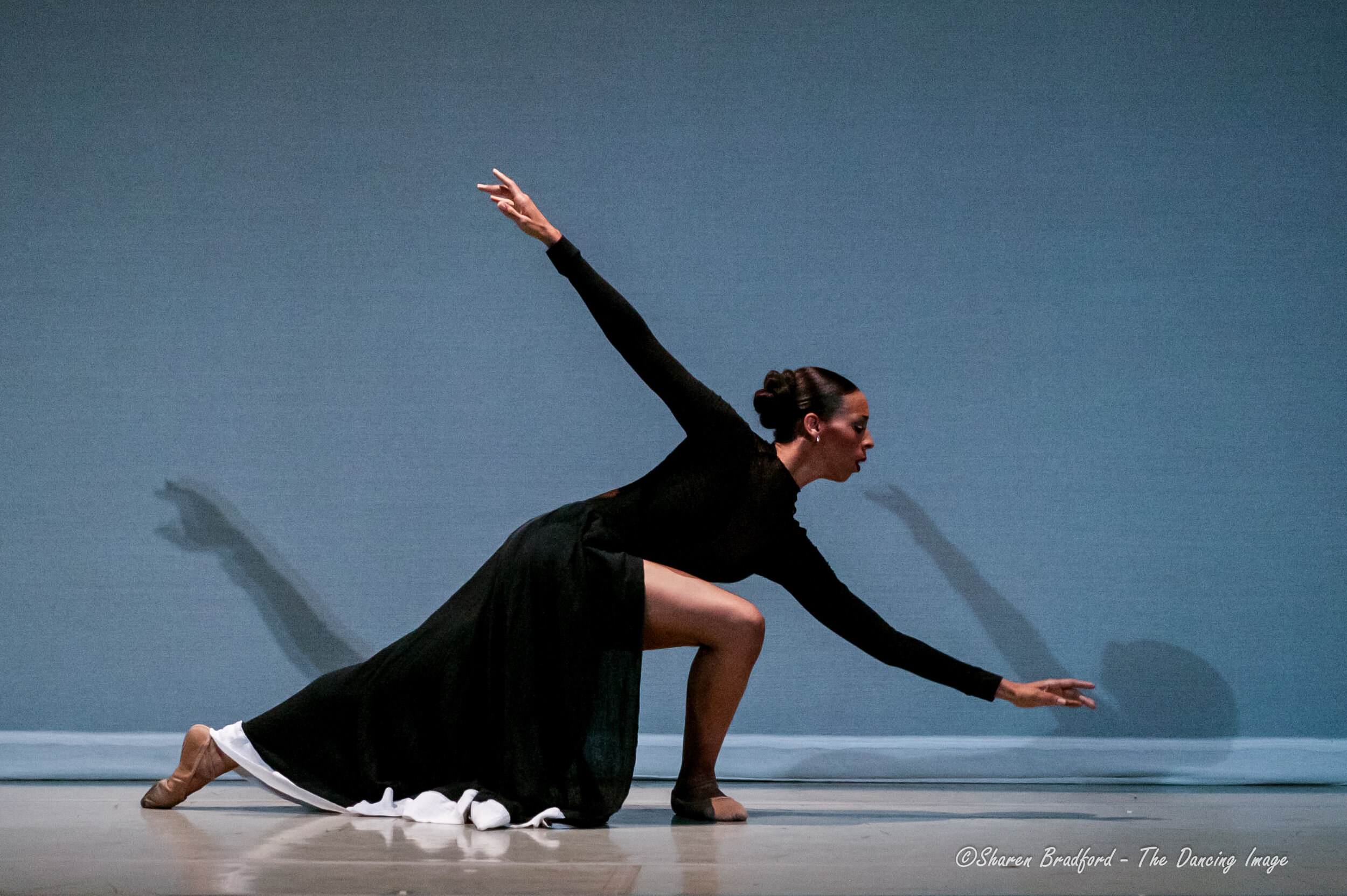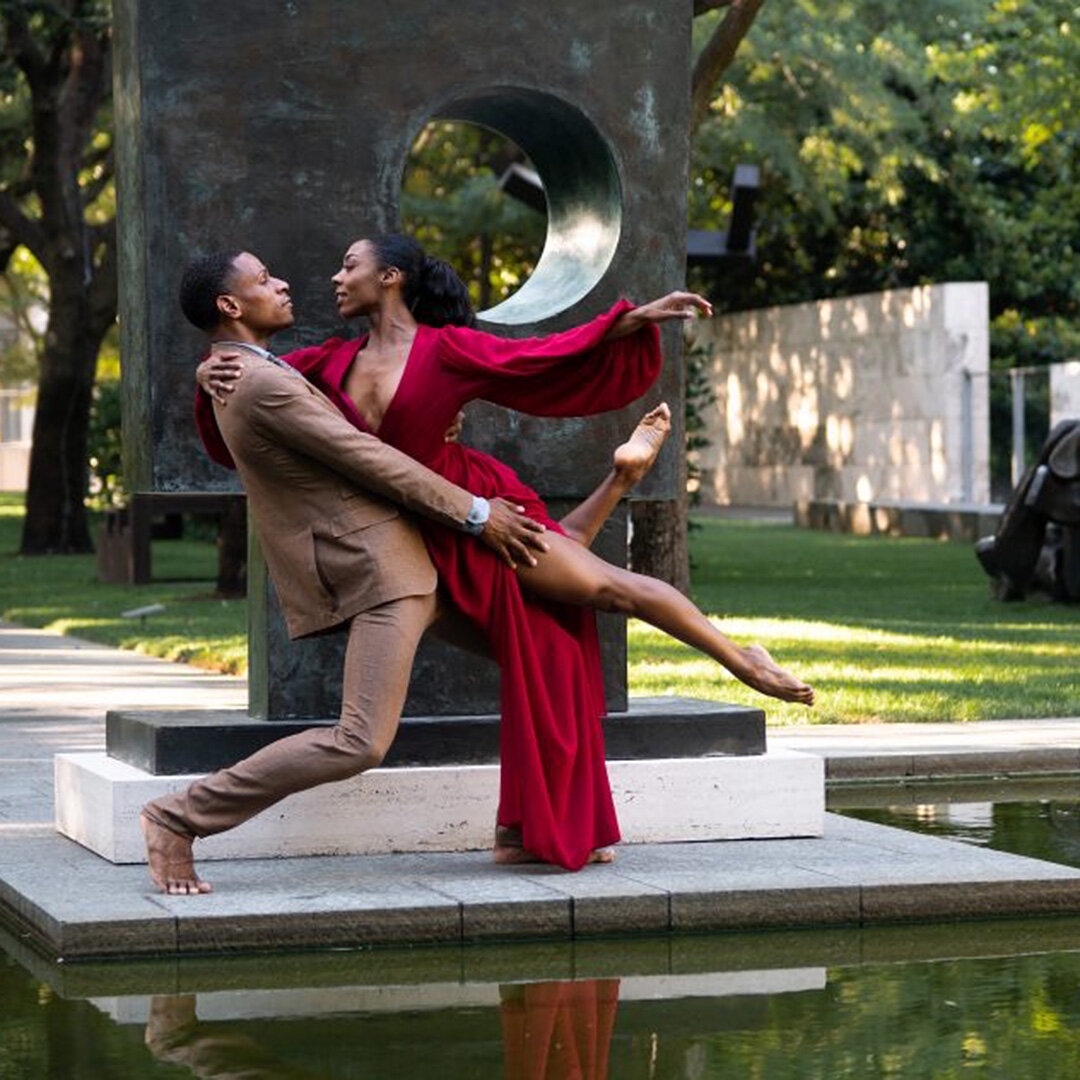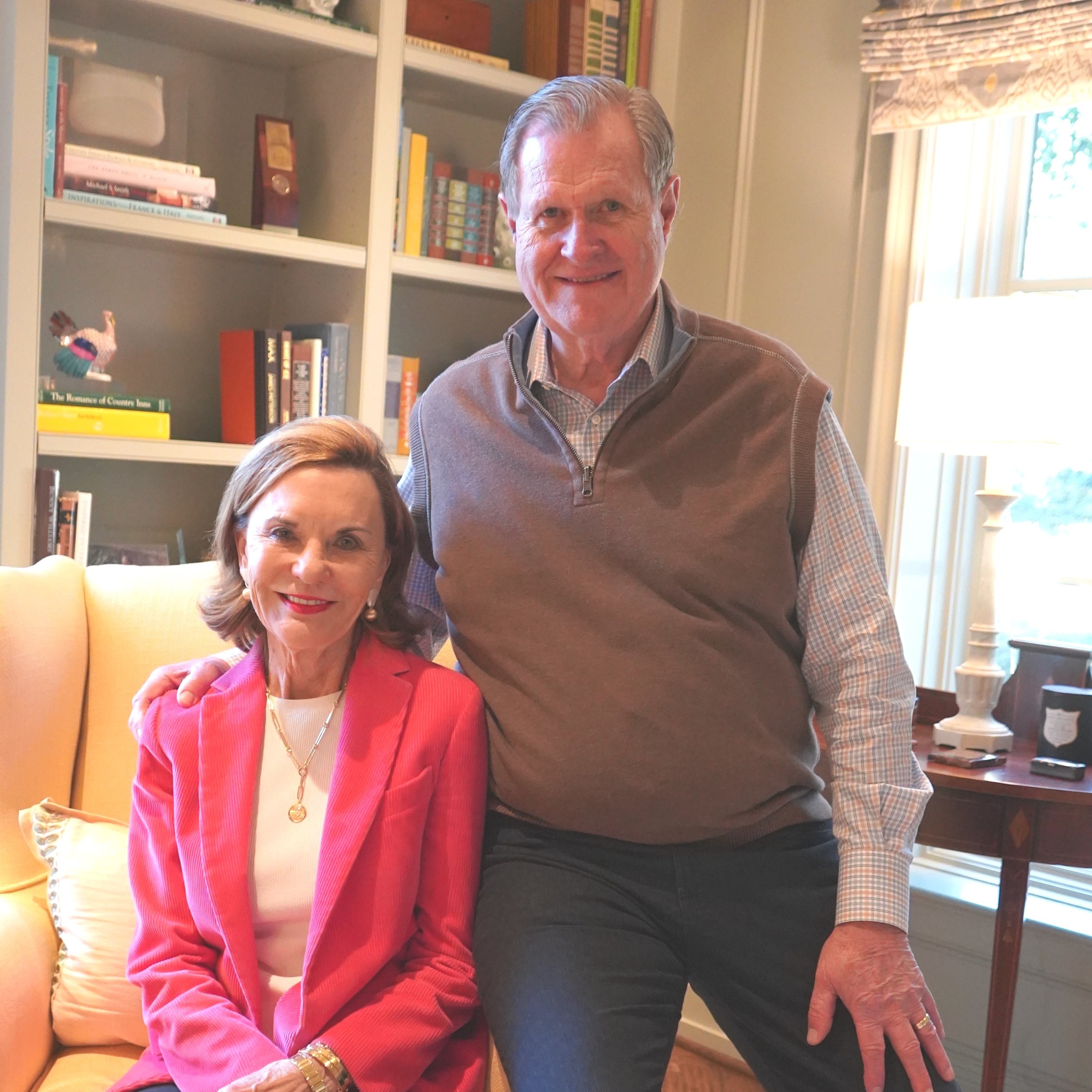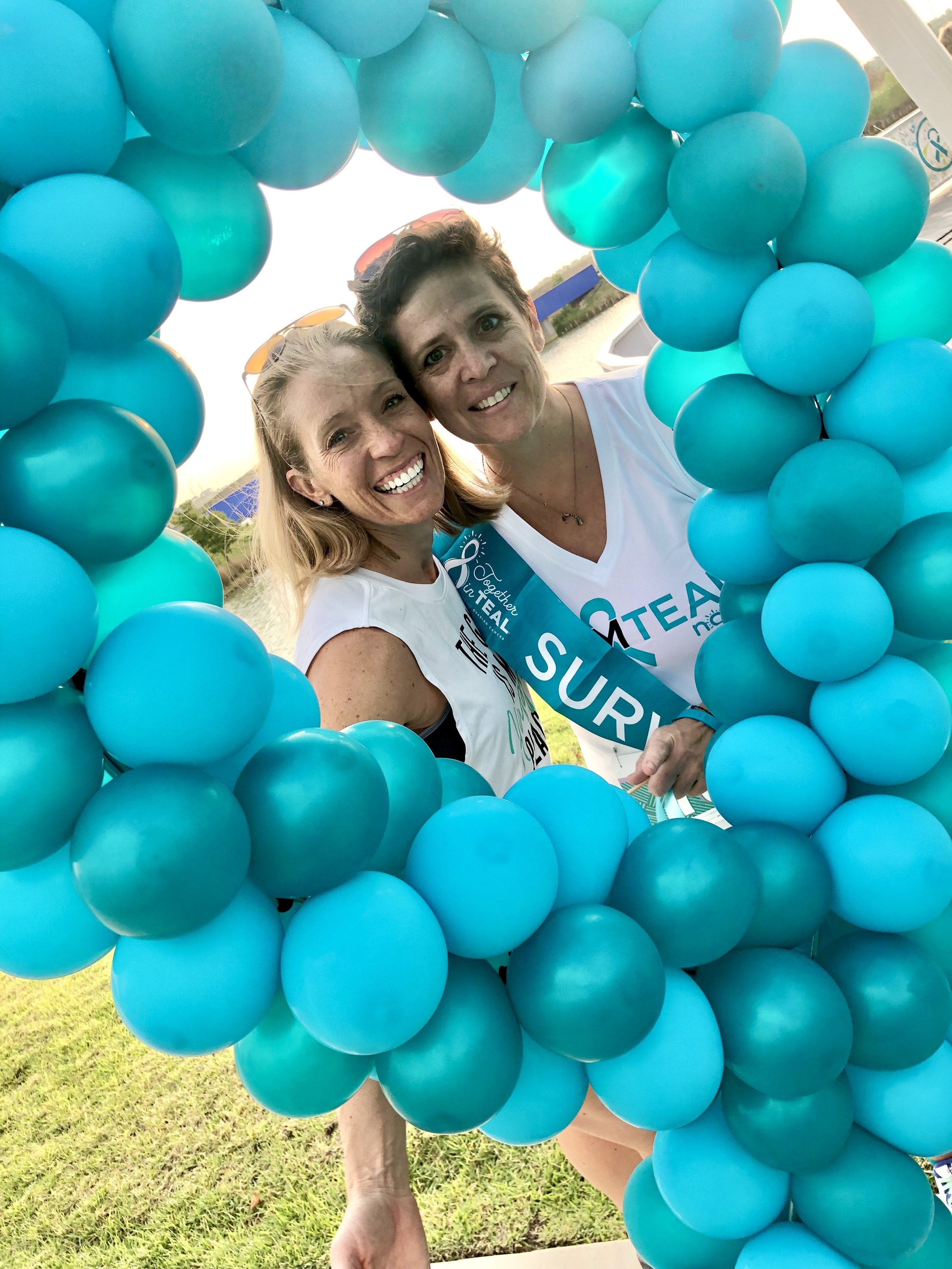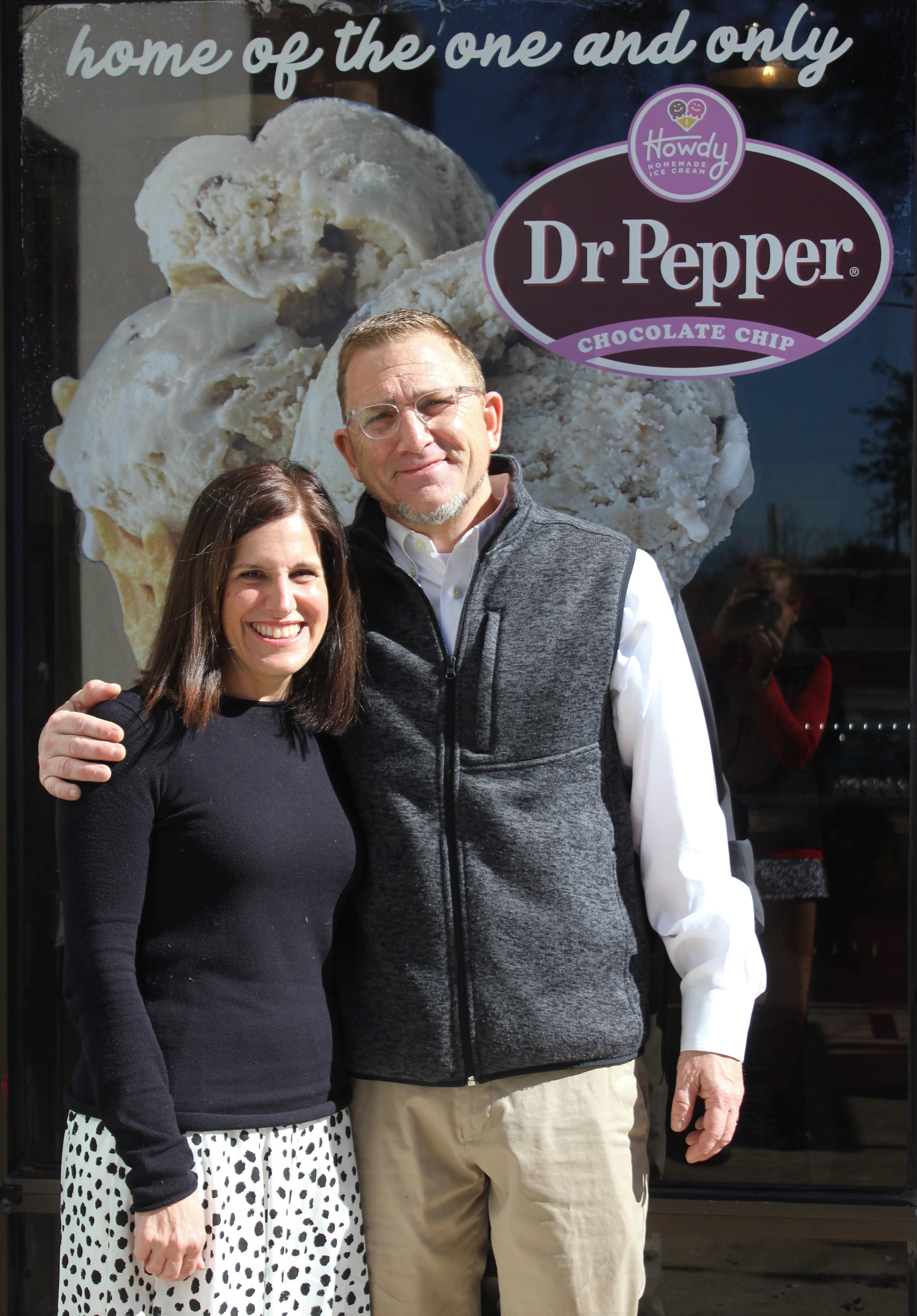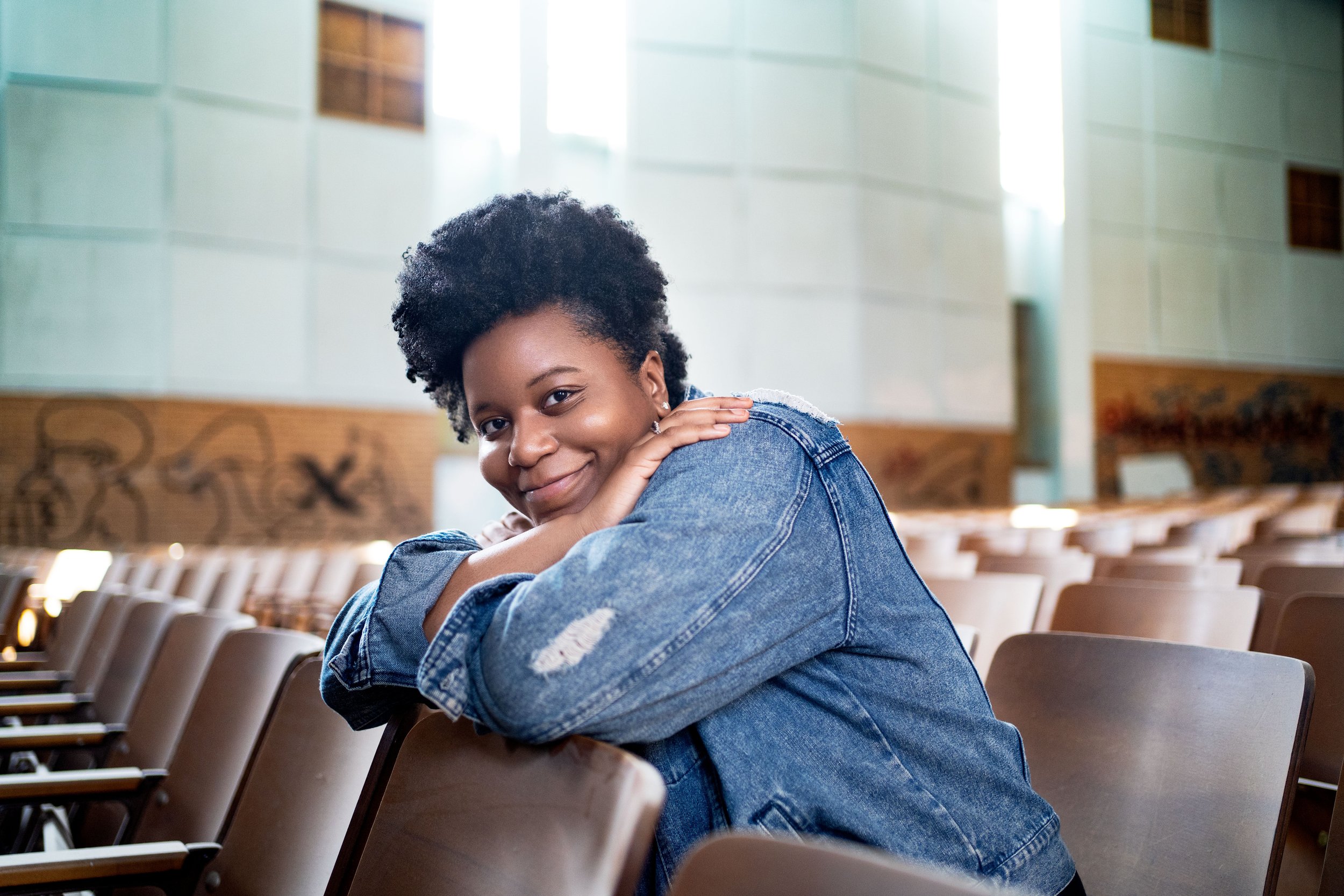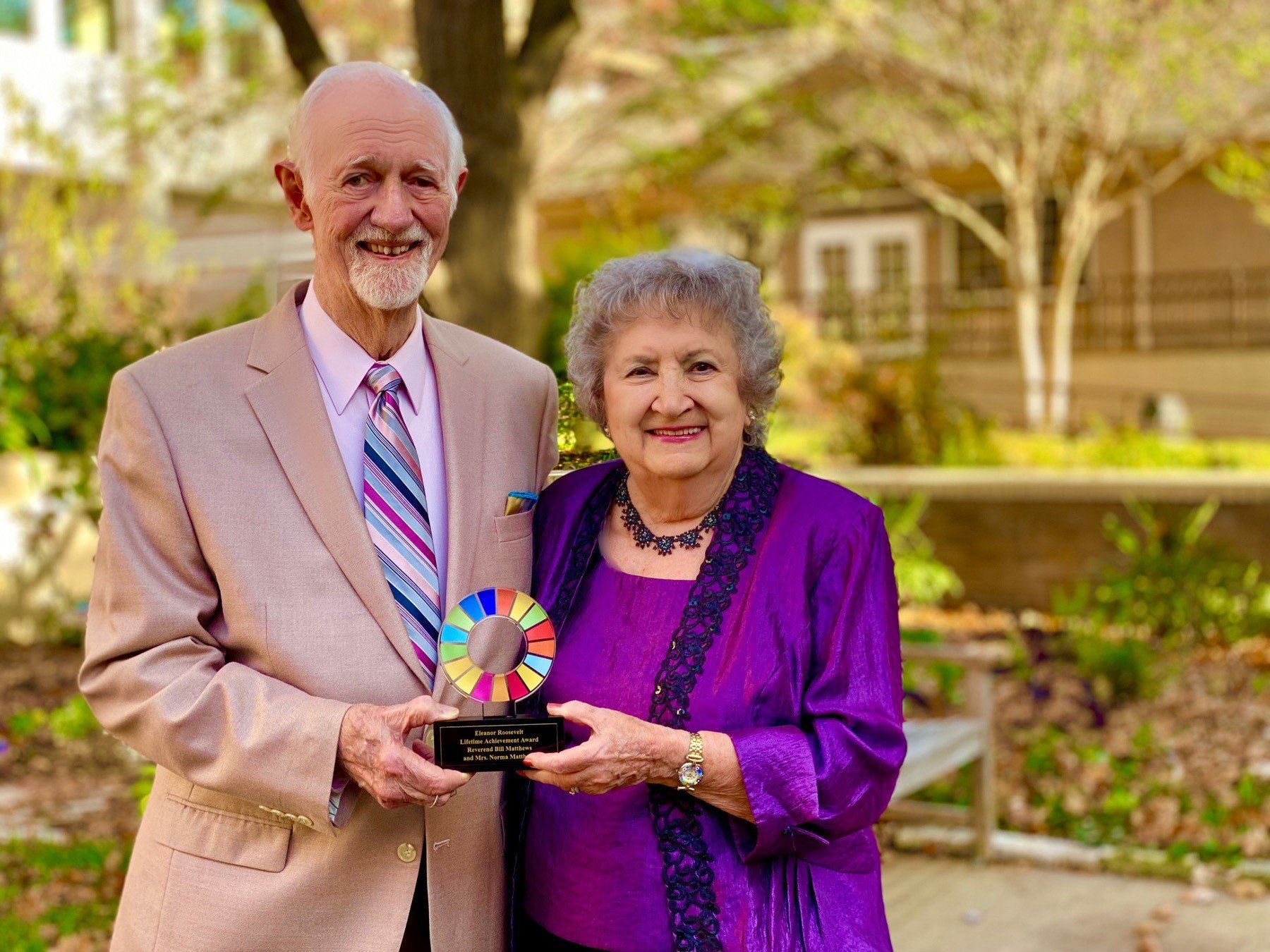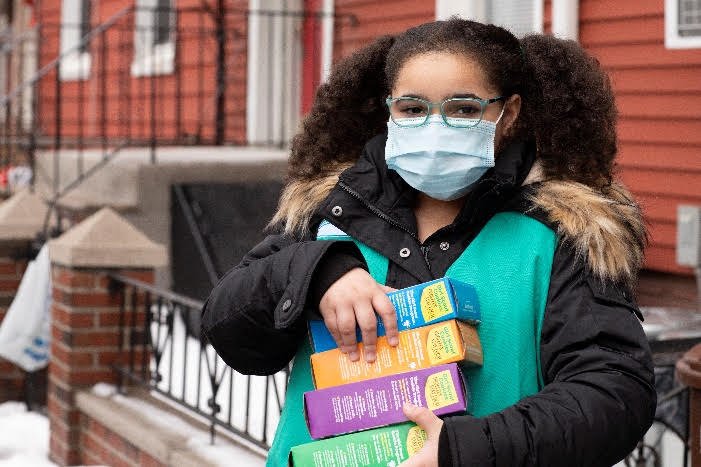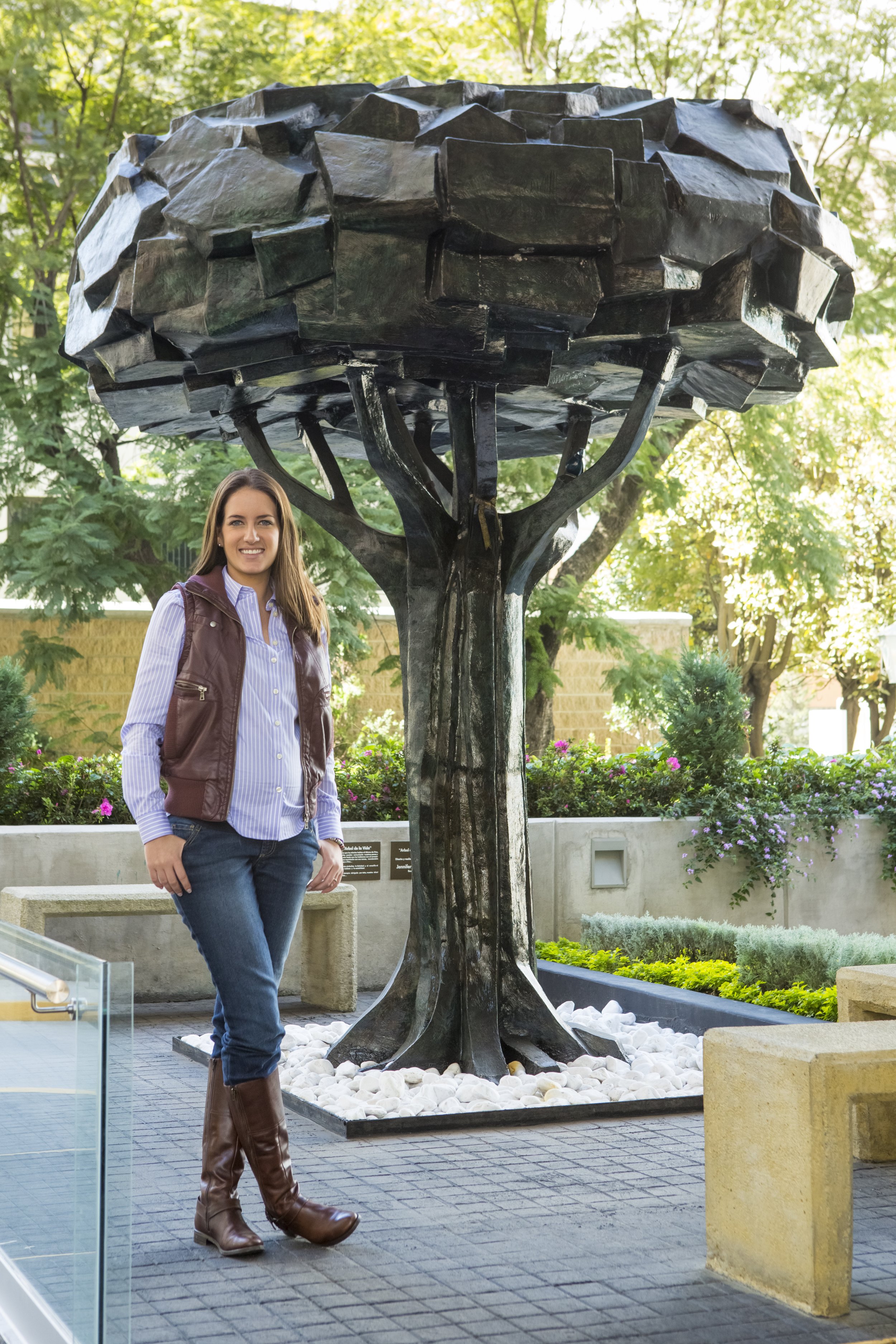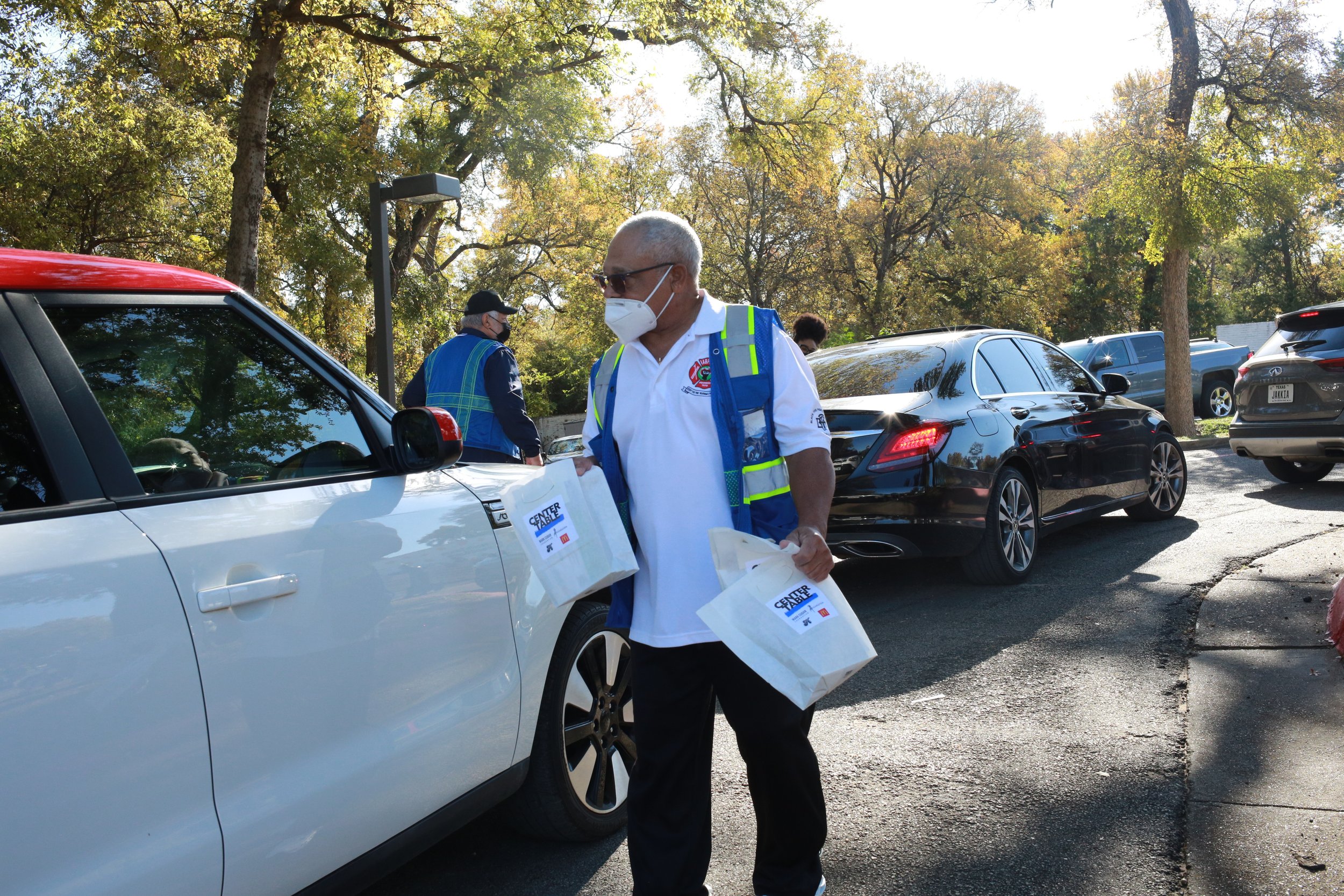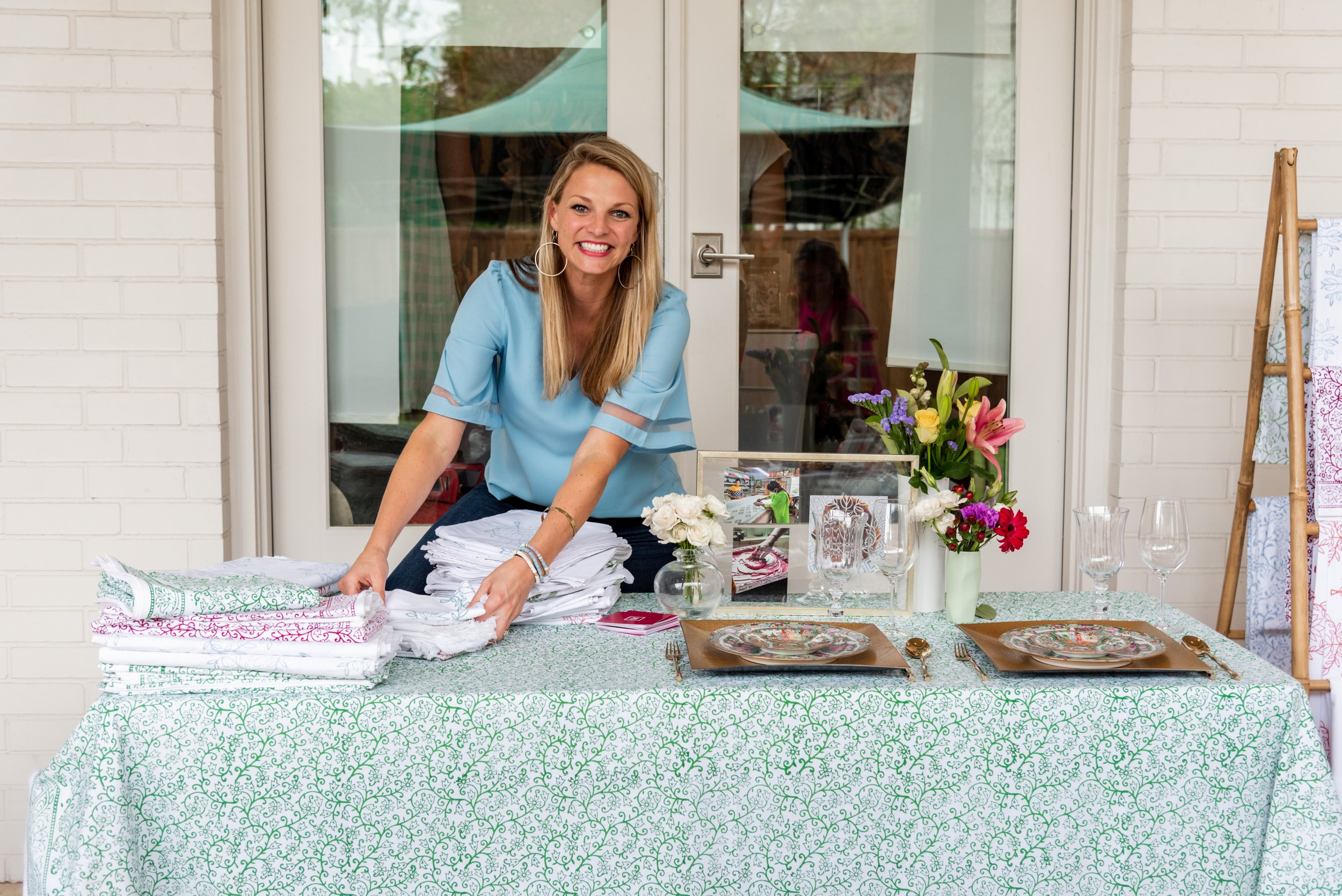Published on January 6, 2021 at 8:40am.
Interview by Kira Woodfield Leeper. Photos courtesy of Dallas Black Dance Theatre.
In her 27th season with Dallas Black Dance Theatre, Melissa M. Young has moved beyond the identity of dancer into an artistic director role that encompasses not only the staging and direction of a ballet company, but also education and advocacy in the community for the cultural experience of Black dance. In our interview, Melissa shares about her journey as a first-generation American, studying dance with The Ailey School, and how those experiences prepared her to lead a performing arts nonprofit in the face of a global pandemic and heightened awareness of racial injustice.
Can you tell us the story of where you grew up, and if you always knew you wanted to be a dancer?
My family is from Tela, Honduras, Central America. I am a first-generation American, grew up in a Spanish-speaking household, and was raised in Santa Ana, California. My parents gave me a lot of room to explore my various interests but deep down inside, I always knew I wanted to be a professional dancer. The great part about dance is that you don’t choose dance, it chooses you. Dance has always been the place I have felt safe, curious, and free. It’s hard to explain, but being on stage is the one place I knew I couldn’t be judged. The stage was where I shared my gifts and showed the audience a reflection of themselves in some way. Telling stories, being vulnerable, provoking thought, capturing attention, and having the ability to shift the mood in the room was truly exhilarating. I believe that being a professional dancer is like being superhuman. Most people can picture themselves as a singer, musician, or actor; being a dancer is completely unfathomable. It requires serious dedication, loyalty, and a strong mindset to train for decades with hopes of getting to the professional level. I believe you’re either wired to be bold enough to take the journey or you’re not. Blessedly, I was.
Melissa M. Young, Artistic Director, Dallas Black Dance Theatre. Photo by Brian Guilliaux.
Can you tell us the story about your path from performer to artistic director? Do you still perform yourself?
My path had more twists and turns than anyone can keep up with. I moved from California to New York for my professional dance training at The Ailey School, which is the official school of the Alvin Ailey American Dance Theatre. After graduation, I did an exchange program for dance in Amsterdam, Holland before moving to Dallas to dance with Dallas Black Dance Theatre. My original intention was to stay in Dallas for two years. After creating what seemed like an impossible list of goals to achieve, those boxes got ticked rather quickly. The notoriety of DBDT was rapid and the once-in-a-lifetime opportunities were never-ending. I would have been crazy to leave with no true plan. After performing with the company for eleven seasons, I moved up the ranks within the organization as I assumed the roles of Rehearsal Director, Associate Artistic Director, Academy Director, Interim Artistic Director, and now Artistic Director. I am in the midst of my twenty-seventh year and feel well-rooted in my purpose.
How did you first get involved in the nonprofit community?
What I do now in the non-profit sector is merely an extension of my career as a professional dancer. I love connecting and collaborating with others as well as being of service to my community and beyond. The vehicle of dance is one of the most powerful ways that I can help bring us all together.
Melissa M. Young, early in her dance career.
Inclusion is infused into your organization. Dallas Black Dance Theatre has unusually clear metrics for assessing success at meeting its diversity, inclusion and equity goals. What do you find to be the most difficult part of keeping a diversified staff, the board of directors, and the audience?
The mission of Dallas Black Dance Theatre is to create and produce contemporary modern dance at its highest level of artistic excellence through performances and educational programs that bridge cultures, reach diverse communities, and encompass ever-expanding national audiences. What we say we do is who we are. We are successful in achieving diversity because the dancers, staff, and board of directors are an inclusive representation. We will consistently grow as an organization because we push ourselves to keep our minds open, get out of our comfort zones, and take smart risks using our unique voice and identity.
Photo by Cori Baker.
How has the increased exposure and support for the current racial justice movement impacted your programming this year?
In my opinion, I feel like this is the first time Dallas Black Dance Theatre can heavily lean into the Black in our name. We haven’t changed any of the stories we have been telling for decades, simply put, there is more of a willingness for us to be heard and accepted. The social climate has shifted mindsets and piqued curiosity for people to learn more about who we are and begin much-needed conversations to understand more about Black history and culture through the lens of dance.
Dallas Black Dance Theatre recently partnered with the Dallas Symphony and Project Unity in a performance to honor lives lost to racial violence. Was this collaboration new and how did this project start?
Dallas Black Dance Theatre has collaborated with the Dallas Symphony Orchestra several times over the years. It was an easy decision to say yes to their invitation. Knowing that our presence would help bring the community together and add a layer of awareness of the type of high-level art African Americans are capable of was key. It was our first in-person performance since February and performing to the live accompaniment of the orchestra was truly magical.
COVID-19 has required a massive pivot for many. Dallas Black Dance Theatre has shifted to virtual performances. What are the challenges that have arose in utilizing a virtual platform over performing live?
We can all share stories of technology challenges and frustrations we have had over the past several months. Giving ourselves digital grace to go with the flow and remember this is all new territory is important. At DBDT, we have been researching and educating ourselves nonstop to figure out the best platform for each virtual program. We do practice-runs days before the public has access and try to forecast what technical glitches our viewers may have at home. Meetings are held following every experience to discuss what worked and what didn’t. It takes a lot of patience in the process and fine-tune as we go along.
Photo by the Dallas Dance Project.
What is the experience like directing a performance without a live audience?
Producing and directing dance for film is an enormous task, especially while maintaining Covid-19 protocols. The dancers are learning how to develop their artistry on film while being authentic with their technique and expressions. Our cinematographers come to rehearsals, study rehearsal videos, and connect with our choreographers to ensure the integrity and intention are maintained. Although the audience is not live, every moment is treated as a live performance. The cameras are the audience. To replicate the real-time experience, the sequences are only filmed once. Our focus and attention to detail is quadrupled because we use multiple cameras and everything is captured in a 360° view. The audiences have the opportunity to feel like they are immersed inside each dance and get to see unique perspectives they would not necessarily see in the theater. All in all, the company dancers are champions because they have been filming in unpredictable weather, unconventional spaces but their passion, loyalty, and willingness to push through the pandemic are evident in the outcome of these brilliant dance films.
Your recent annual “Black on Black” performance was virtual due to COVID-19 restrictions. Do you see any of the changes in programming that you’ve made as part of your adaptability during a pandemic year continuing once typical performances can occur?
DBDT has been presenting virtual content since June 2020. We have showcased previously recorded performances as well as reimagining and filming new dances at various locations around Dallas. Viewers have tuned in from across the U.S. and multiple countries. What we have developed thus far will continue as we move forward because our reach has expanded far beyond our expectations. We plan to present digital dance in tandem with our performances in Dallas and as we return to touring nationally and internationally. Additionally, it’s important to consider that many individuals may feel more comfortable with staying at home and they deserve to have access to the DBDT goodness, too.
Can you share your favorite story from your involvement with Dallas Black Dance Theatre?
There are too many favorite stories to recall only one. My most memorable moments with being a part of Dallas Black Dance Theatre have been working with legendary choreographers that I had only read about in dance history books, performing at The Kennedy Center, Lincoln Center, and two Cultural Olympiads; traveling around the world, making life-long friends that I danced with in the company and of course, working alongside DBDT Founder, Ann Williams.
How can someone support Dallas Black Dance Theatre and learn about upcoming events?
The dancers have often shared, “The way people can support us is by coming to our performances!” Whether in-person or virtual, your presence makes a difference because all the dancers want is to be appreciated for their talents and be seen across the world. Every performance is different from the next so we always hope the support is continuous. Dallas Black Dance Theatre is working hard to build our global community so we can have an unforgettable celebration together as we approach our 45th season in 2021-2022. We want everyone to spread the word, stay connected, and feel our spirit as we uncover the layers of our history and legacy. You are always welcomed to be a part of DBDT. Welcome home.
If you would like to learn more about Dallas Black Dance Theatre, please visit their website at www.dbdt.com and follow on social media at @dallasblackdance (Facebook and Instagram) and @dallasblkdance (Twitter).
More Good Stories
Featured
When Kathy and Larry Helm heard about The Senior Source’s 60th Birthday Diamond Dance-Off, they knew they had to put on their dancing shoes! For the Helms, this event combined two of their passions into one. Celebrating and supporting The Senior Source, a Dallas-area nonprofit that has been serving older adults for 60 years, and dancing together, which they have been doing since they were high school sweethearts. Both Kathy and Larry have chaired the board of directors of The Senior Source and have been proud supporters since 1998. It seemed only fitting they should be voted into the finals to dance on stage at Klyde Warren Park this past summer.
In 2020, more than 912,000 women were diagnosed with some form of cancer in the United States alone. During that same pandemic year, countless medical appointments were canceled while people were social distancing, and yet still each day nearly 2,500 women heard the news, “you have cancer.” There is no doubt that these words can be crushing to hear, but what’s equally crushing is the lack of tangible, encouraging support that exists to help women feel beautiful, strong or “normal” before, during and after cancer treatment.
When Tom Landis opened the doors to Howdy Homemade in 2015, he didn’t have a business plan. He had a people plan. And by creating a space where teens and adults with disabilities can find meaningful employment, he is impacting lives throughout our community and challenging business leaders to become more inclusive in their hiring practices.
Have you ever met someone with great energy and just inspired you to be a better you? Nitashia Johnson is a creator who believes by showing the love and beauty in the world it will be contagious and make an impact. She is an encourager and knows what “never give up” means. Nitashia is a multimedia artist who works in photography, video, visual arts and graphic design. Her spirit for art and teaching is abundant and the city of Dallas is fortunate to have her in the community.
The United Nations Association Dallas Chapter (DUNA) honored Rev. Bill and Norma Matthews for their ongoing commitment, helping advance the United Nations Sustainable Development Goals agenda by promoting peace and well-being.
This season, Girl Scouts are again selling cookies in creative, socially distant, and contact-free ways to keep themselves and their customers safe during the ongoing COVID-19 pandemic. Many Girl Scouts will run outdoor cookie booths that follow local, state, and CDC guidelines while still getting everyone’s favorite cookies to their customers.
The Dallas Doing Good Editorial Team invited Dallas photographer, Don Tortellini, to present his photo essay on homelessness: the faces of Dallas. Don spends time with the homeless and has become a trusted friend to many. The following story and captions are Don’s words from his personal interviews with each participant.
When artist Jennifer Troice created her first helping hands sculptures, she did so to show appreciation to friends and family who helped her through a dark period of time in her life. As her business continued to grow, the helping hands became her signature piece in her philanthropic giving.
An event that began in May 2020 has now become a continued tradition for the team and partners at the Mark Cuban Heroes Basketball Center. The Center Table Harvest provided boxes of food and vouchers for turkeys for 500 families this past weekend, bringing together volunteers from around the community, including Dirk Nowitzki and first responders.
By bringing beautiful block-printed linens to tables in Texas, Mallory Martin is not only starting conversations about modern day human trafficking, but also empowering survivors with sustainable employment. Mended, her new home decor company, is partnering with local and international organizations in South Asia to train women in the art of block printing, as well as business practices that will bring economic freedom.
